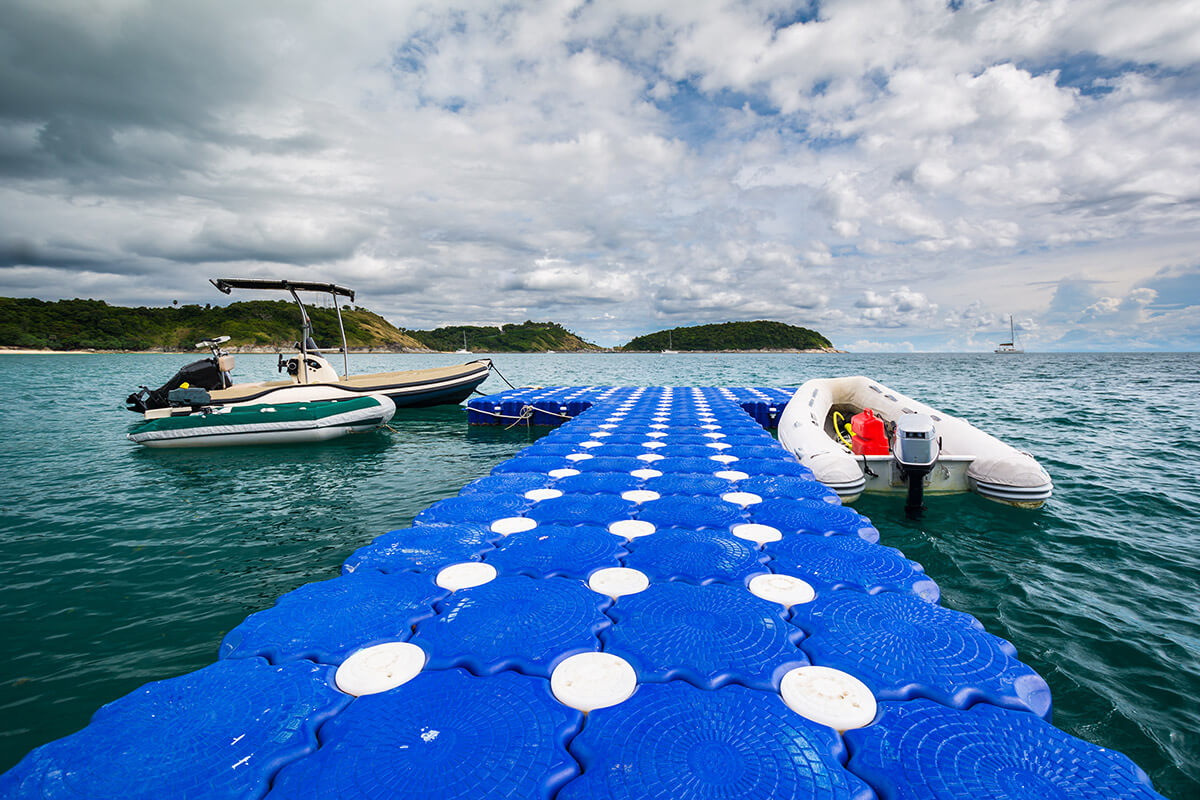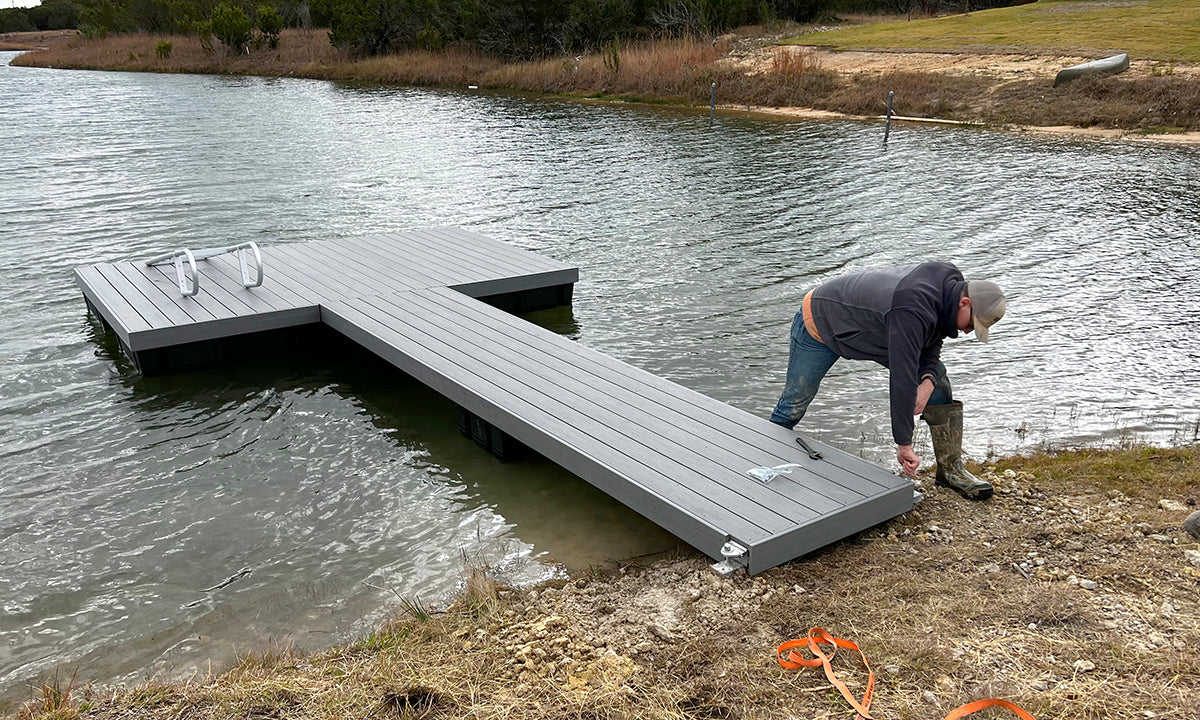Upgrade Your Waterfront With Sturdy Floating Docks
Upgrading your waterfront with resilient floating docks can dramatically improve both performance and appearances, offering a functional remedy for numerous water activities. With a variety of products readily available, including low-maintenance options and standard timber, selecting the ideal dock can match your individual design and fulfill practical needs.
Benefits of Floating Docks
Floating docks offer a wide range of advantages that enhance their appeal for numerous maritime applications. One of the primary benefits is their flexibility to transforming water degrees - floating dock services. Unlike typical set docks, floating docks fluctuate with the trend, making sure constant ease of access for boats and boat no matter environmental conditions. This feature significantly reduces the threat of damage to vessels, as they remain firmly anchored even throughout changes in water depth.
In addition, floating docks are much easier to mount and relocate, offering flexibility for seasonal or temporary usage. Their modular layout permits modification to fit certain needs, whether for private marinas, property waterfronts, or industrial applications.
Furthermore, floating docks create very little disruption to the marine environment, protecting neighborhood ecosystems and minimizing the probability of disintegration. They also offer boosted safety and stability for individuals, as their buoyant nature offers a much more flexible surface area than stiff frameworks.
In addition, floating docks can assist in a varied variety of activities, such as angling, swimming, and entertainment boating, making them a valuable possession for waterside growth. Their adaptability and practicality make floating docks a recommended choice for a variety of maritime projects.
Choosing the Right Materials
Choosing proper materials for floating docks is important to their durability, performance, and general efficiency. When selecting materials, think about aspects such as ecological direct exposure, upkeep demands, and structural stability. Common materials include timber, plastic, light weight aluminum, and composite alternatives, each offering unique advantages and negative aspects.
Timber, while visually pleasing, needs regular maintenance to prevent rot and degeneration. Pressure-treated timber can boost durability, yet it might still catch water damages in time. Plastic floats, often made from high-density polyethylene, are immune to rust and need minimal maintenance, making them an eye-catching option for low-maintenance applications.
Light weight aluminum is one more practical option, recognized for its stamina and lightweight residential or commercial properties. It is resistant to corrosion and can stand up to extreme weather problems, although it might be more pricey than other materials. Compound products combine the most effective features of wood and plastic, supplying a durable and low-maintenance choice that imitates the look of wood without the associated downsides.
Ultimately, the selection of material need to align with the planned use, ecological considerations, and budget plan restraints, guaranteeing a durable and functional floating dock that meets your details requirements.
Installation Refine Overview
The effective installment of a floating dock depends on careful planning and implementation, ensuring that it operates effectively in its designated setting. The very first step entails assessing site problems, consisting of water depth, shoreline attributes, and prevailing weather condition patterns, which will certainly inform the dock design and anchoring system.
Complying with the website analysis, the following phase is to prepare the floating dock elements. This consists of putting together the structure, protecting drifts, and connecting any type of necessary equipment. It is vital to make sure that all connections are durable and waterproof to withstand marine conditions.
When the dock is set up, the installation procedure starts with placing the dock in the water. This can entail a crane or other training tools, specifically for bigger frameworks. Correct placement is essential for functionality and safety.

Upkeep Tips for Longevity
Regular upkeep is crucial for making sure the long life and ideal efficiency of a drifting dock. To accomplish this, begin with regular evaluations at the very least twice a year, concentrating on the stability of the dock's framework, including the flotation protection devices and linking equipment. Try to find signs of wear, damages, or corrosion, and deal with any kind of issues immediately to avoid additional damage.
Cleaning is one more essential aspect of maintenance. Eliminate particles, algae, and barnacles from the dock's surface to stop slippery conditions and maintain visual allure. Use a soft brush and a light detergent to avoid damaging the dock's products.
In addition, ensure image source that the dock is correctly anchored and protected to hold up against seasonal adjustments in water levels and weather conditions. Inspect the anchoring system for security and make changes as necessary.
Enhancing Your Outdoor Aesthetic
To create a visually appealing outdoor space, incorporating a floating dock can substantially improve look these up the general visual of your waterside home. Floating docks are not only useful yet can additionally work as a striking prime focus that enhances the natural environments - dock company. Readily available in numerous products and styles, these docks can be customized to match your residential or commercial property's architectural design and landscape
The enhancement of ornamental aspects, such as integrated lighting or stylish barriers, additionally raises the dock's visual allure. Take into consideration utilizing natural timber surfaces, which blend seamlessly with the setting, or choosing for modern products like light weight aluminum or composite decking that offer a streamlined, contemporary appearance.
Tactically placing planters or seating locations on or around the dock can produce welcoming areas that encourage leisure and pleasure of waterfront sights. Additionally, including colors and appearances that balance with your landscape will produce a natural aesthetic throughout your exterior area.

Verdict

Upgrading your waterfront with resilient floating docks can considerably improve both functionality and aesthetic appeals, supplying a versatile remedy for numerous water tasks. Unlike typical set docks, floating docks rise and fall with the tide, making sure regular access for watercrafts and boat no matter of environmental problems.Selecting appropriate products for floating docks is important to their long life, efficiency, and general performance.Once the dock is put together, the installment process begins with positioning the dock in the water.In summary, floating docks offer countless benefits, including adaptability to water level modifications and a selection of product alternatives.